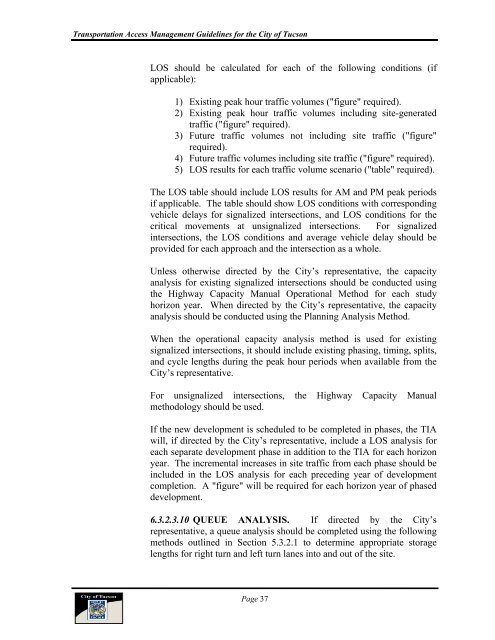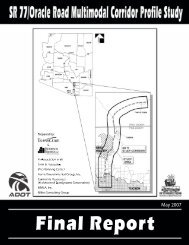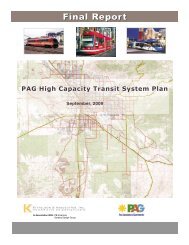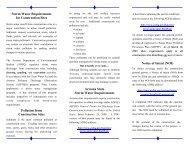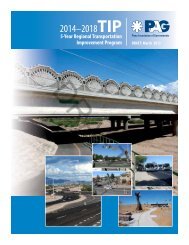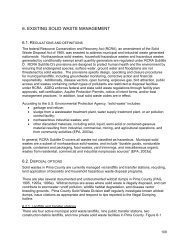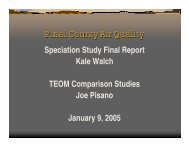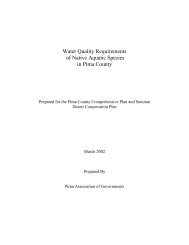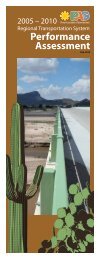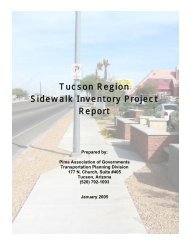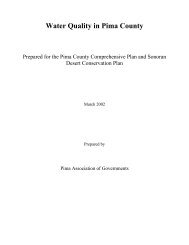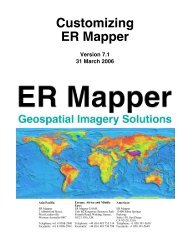Transportation Access Management Guidelines for ... - City of Tucson
Transportation Access Management Guidelines for ... - City of Tucson
Transportation Access Management Guidelines for ... - City of Tucson
Create successful ePaper yourself
Turn your PDF publications into a flip-book with our unique Google optimized e-Paper software.
<strong>Transportation</strong> <strong>Access</strong> <strong>Management</strong> <strong>Guidelines</strong> <strong>for</strong> the <strong>City</strong> <strong>of</strong> <strong>Tucson</strong><br />
LOS should be calculated <strong>for</strong> each <strong>of</strong> the following conditions (if<br />
applicable):<br />
1) Existing peak hour traffic volumes ("figure" required).<br />
2) Existing peak hour traffic volumes including site-generated<br />
traffic ("figure" required).<br />
3) Future traffic volumes not including site traffic ("figure"<br />
required).<br />
4) Future traffic volumes including site traffic ("figure" required).<br />
5) LOS results <strong>for</strong> each traffic volume scenario ("table" required).<br />
The LOS table should include LOS results <strong>for</strong> AM and PM peak periods<br />
if applicable. The table should show LOS conditions with corresponding<br />
vehicle delays <strong>for</strong> signalized intersections, and LOS conditions <strong>for</strong> the<br />
critical movements at unsignalized intersections. For signalized<br />
intersections, the LOS conditions and average vehicle delay should be<br />
provided <strong>for</strong> each approach and the intersection as a whole.<br />
Unless otherwise directed by the <strong>City</strong>’s representative, the capacity<br />
analysis <strong>for</strong> existing signalized intersections should be conducted using<br />
the Highway Capacity Manual Operational Method <strong>for</strong> each study<br />
horizon year. When directed by the <strong>City</strong>’s representative, the capacity<br />
analysis should be conducted using the Planning Analysis Method.<br />
When the operational capacity analysis method is used <strong>for</strong> existing<br />
signalized intersections, it should include existing phasing, timing, splits,<br />
and cycle lengths during the peak hour periods when available from the<br />
<strong>City</strong>’s representative.<br />
For unsignalized intersections, the Highway Capacity Manual<br />
methodology should be used.<br />
If the new development is scheduled to be completed in phases, the TIA<br />
will, if directed by the <strong>City</strong>’s representative, include a LOS analysis <strong>for</strong><br />
each separate development phase in addition to the TIA <strong>for</strong> each horizon<br />
year. The incremental increases in site traffic from each phase should be<br />
included in the LOS analysis <strong>for</strong> each preceding year <strong>of</strong> development<br />
completion. A "figure" will be required <strong>for</strong> each horizon year <strong>of</strong> phased<br />
development.<br />
6.3.2.3.10 QUEUE ANALYSIS. If directed by the <strong>City</strong>’s<br />
representative, a queue analysis should be completed using the following<br />
methods outlined in Section 5.3.2.1 to determine appropriate storage<br />
lengths <strong>for</strong> right turn and left turn lanes into and out <strong>of</strong> the site.<br />
Page 37


